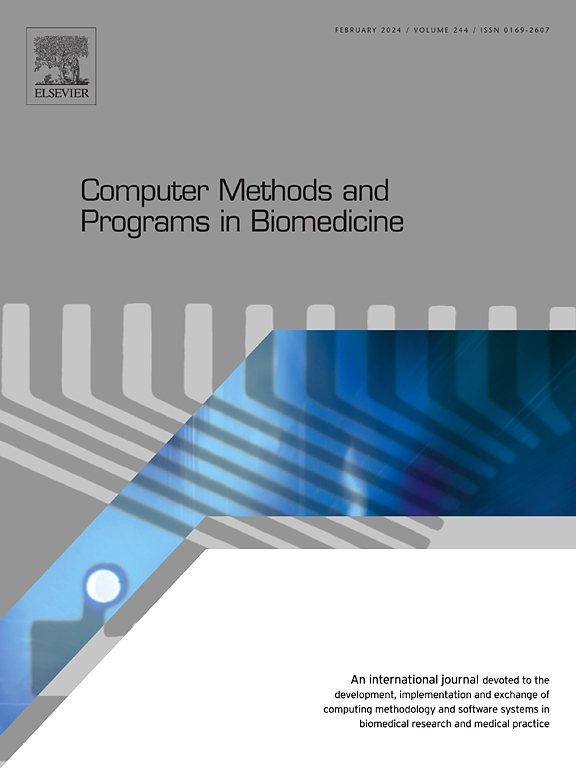Hemodynamics of different surgical subclavian revascularization morphologies for thoracic endovascular aortic repair
IF 4.9
2区 医学
Q1 COMPUTER SCIENCE, INTERDISCIPLINARY APPLICATIONS
引用次数: 0
Abstract
Background and Objective
Carotid-subclavian bypass (CSB) and subclavian-carotid transposition (SCT) are mainstream surgical left subclavian artery (LSA) revascularization methods. However, surgical selection of CSB and SCT morphological configurations mainly depends on surgeons’ experience, lacking objective data basis.
Methods
Geometries with 28 configurations, including length, diameter, angle, and anastomotic direction for prosthetic conduit and transposed LSA, were constructed. Numerical simulations were performed to evaluate CSB and SCT outcomes by hemodynamic parameters such as pressure drop, flow rate, energy loss and wall shear stress related indicators.
Results
After CSB, enlarging prosthetic conduit diameter (6 to 10 mm) increases flow rate by 36.64 %, suggesting larger diameter enhances LSA patency. However, when diameter exceeds 9 mm, the relative residence time rises by 35.29 %, demonstrating oversized diameter increases the risk of thrombosis. Compared to 5 mm, prosthetic conduit at 15 mm displays a 7.80 % flow rate reduction, indicating longer conduit causes greater flow resistance. For varying angles, prosthetic conduit perpendicular to left common carotid artery (LCCA) shows the least energy loss. Conduit tilted downward from the vertical position shows higher flow rate than the upward during systole (210.35 vs. 106.34 ml/min). However, 10 % blood flow in downward conduit reflows cyclically during diastole, resulting in the reduced cycle-averaged flow rate of downward conduit compared to that of the upward (53.21 vs. 58.42 ml/min). After SCT, configurations with smaller angles between LCCA and LSA show better hemodynamic performance, with a maximum flow rate variation of 30.34 % in LSA from 50° to 110°.
Conclusions
Configurations with moderately smaller diameter, reduced length of prosthetic conduit and aligned anastomosis towards LCCA blood flow result in better LSA revascularization outcomes. The findings are supportive for optimizing CSB and SCT configurations.
求助全文
约1分钟内获得全文
求助全文
来源期刊

Computer methods and programs in biomedicine
工程技术-工程:生物医学
CiteScore
12.30
自引率
6.60%
发文量
601
审稿时长
135 days
期刊介绍:
To encourage the development of formal computing methods, and their application in biomedical research and medical practice, by illustration of fundamental principles in biomedical informatics research; to stimulate basic research into application software design; to report the state of research of biomedical information processing projects; to report new computer methodologies applied in biomedical areas; the eventual distribution of demonstrable software to avoid duplication of effort; to provide a forum for discussion and improvement of existing software; to optimize contact between national organizations and regional user groups by promoting an international exchange of information on formal methods, standards and software in biomedicine.
Computer Methods and Programs in Biomedicine covers computing methodology and software systems derived from computing science for implementation in all aspects of biomedical research and medical practice. It is designed to serve: biochemists; biologists; geneticists; immunologists; neuroscientists; pharmacologists; toxicologists; clinicians; epidemiologists; psychiatrists; psychologists; cardiologists; chemists; (radio)physicists; computer scientists; programmers and systems analysts; biomedical, clinical, electrical and other engineers; teachers of medical informatics and users of educational software.
 求助内容:
求助内容: 应助结果提醒方式:
应助结果提醒方式:


